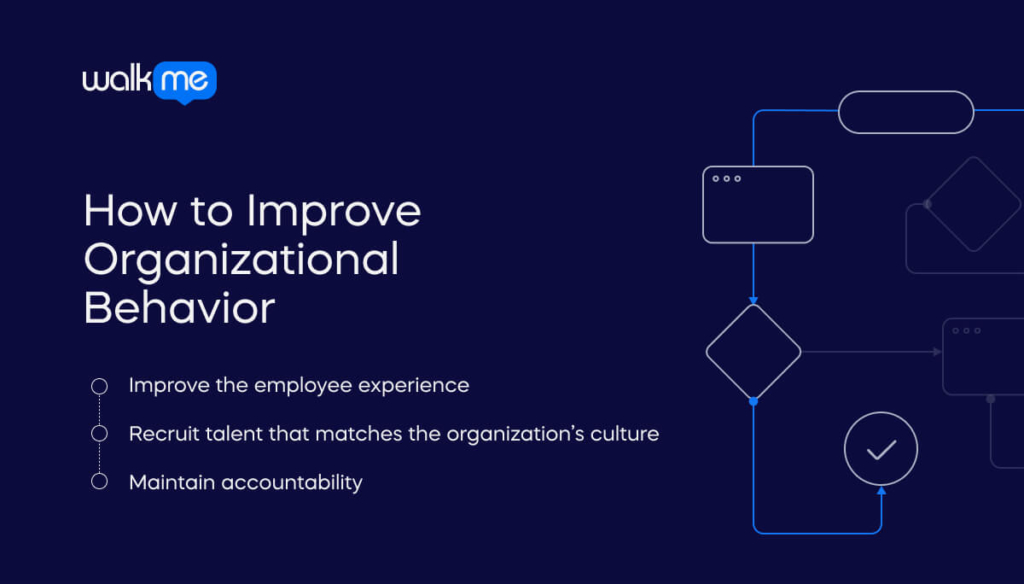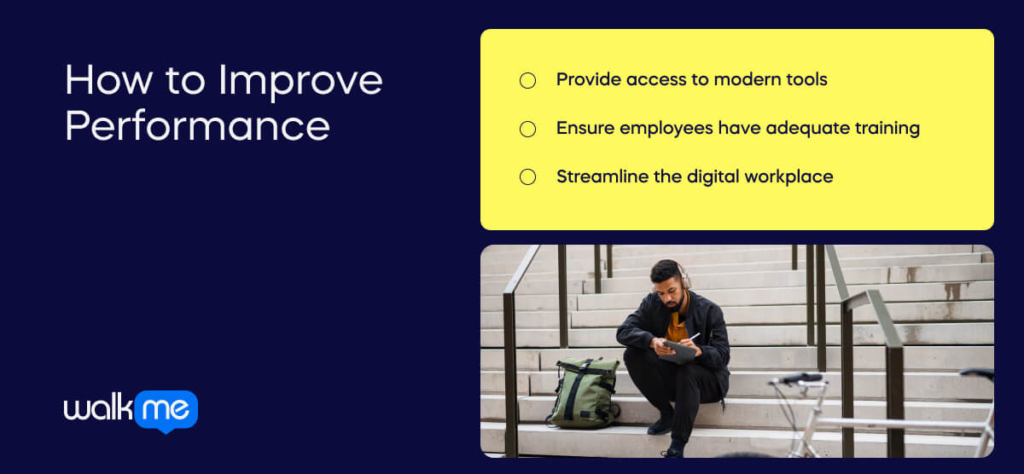Organizational behavior, improving performance, and commitment in the workplace … these are common concerns for change managers, employee experience managers, and HR professionals.
This is especially true today, when continual organizational change has become the norm.
Managing change successfully is important for a number of reasons:
- Unmanaged change projects are less likely to meet their objectives
- Managed organizational change produces better outcomes
- Organizations that cannot adapt in today’s dynamic economy will fall behind
In other words, change management plays a crucial, strategic role in the modern organization.
Below, we will learn a few ways that change managers can increase the chances of successful organizational change.
Organizational Behavior, Improving Performance, and Commitment in the Workplace – How to Ensure Successful Change
Most change management focuses on the people side of change … that is, on how individual employees drive change.
The reason is simple: without employee support, change will not succeed.
Let’s look at a few core issues related to change management, starting with organizational behavior.
How to Improve Organizational Behavior

Organizational behavior refers to how people behave within an organization.
People’s behavior can impact many areas of the organization, from organizational performance to organizational change.
For that reason, organizational behavior is a main focus for change managers, HR professionals, and others who want to streamline organizational change.
Here are a few ways that businesses can improve organizational behavior:
- Improve the employee experience. Motivation, engagement, and satisfaction often depends on employees’ experiences with an organization. These sentiments, in turn, impact behavior, productivity, and performance.
- Recruit talent that matches the organization’s culture. To maintain behavioral standards, it is important to hire candidates that match the desired organizational culture. Mismatches will produce conflict and friction, which can result in a number of behavioral problems. Those, in turn, can have a negative effect on people’s willingness to change.
- Maintain accountability. During any business process, including change projects, accountability is a must. In other words, duties should be delegated properly and project coordinators should implement mechanisms that ensure those duties are carried out.
People’s behavior, or activities, will have a direct effect on their performance, both in day-to-day operations and in organizational change projects.
However, there are certainly other variables that impact performance, such as those discussed next.
How to Improve Performance

Here are a few ways that organizations can improve employee performance and, in turn, organizational performance:
- Provide access to modern tools. Modern tools open up new opportunities for employees and organizations. The right tools can enable innovation, improve business process efficiency, decrease costs, and more.
- Ensure employees have adequate training. Employee training is necessary for workers to perform at their full potential. And, as a result, the organization will only earn partial returns on its software investments.
- Streamline the digital workplace. The digital workplace itself is another influence on employee performance. A streamlined, efficient workplace helps improve performance, enhance the work environment, and keep employees engaged. Modern workplaces should take advantage of the latest tools, work practices, and technology.
Clearly, there is no single method to improve employee performance.
Technology, training, and the work environment can all contribute to performance levels.
However, unless employees are committed, performance can easily flounder.
That is why employee commitment should become another priority.
How to Earn Commitment in the Workplace
Above, we discussed organizational behavior, or how people act within an organization.
However, it is important to distinguish between behavior and sentiment.
Employees emotions, although less tangible than their behavior, have a definite impact on their behavior, their performance, and their ability to change.
Whether designing an organizational change project or an organizational improvement initiative, it pays to look at employee sentiment.
In particular, it is important to understand how to engage employees, gain their support, and earn their commitment.
Here are a few tips for doing just that:
- Make sure employees know “what’s in it for them.” Every employee is self-interested, so it is useful to appeal to that self-interest. For instance, when selling an organizational change project, change managers can persuade employees by explaining how that change will benefit them personally.
- Offer incentives. Incentives are another way to earn commitment. Incentives, such as financial bonuses or recognition, should not be the only tactic in one’s arsenal. However, they can be a useful reward to maintain momentum during change projects.
- Assess and address employees’ problems. Workplace problems can extinguish motivation and commitment. This, in turn, can lower productivity and performance, increase employee resistance, and stall change projects. Because workplace problems can vary greatly, it is important to survey employees, understand their workplace experience, then improve that experience as much as possible.
Earning employees’ commitment is perhaps one of the most important obstacles to overcome during any organizational change project.
Of course, the importance of commitment extends beyond change management to the daily operations of a business.
After all, employees who are more committed will perform better, behave better, and be more productive.

